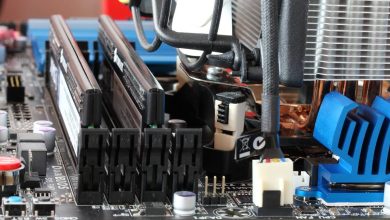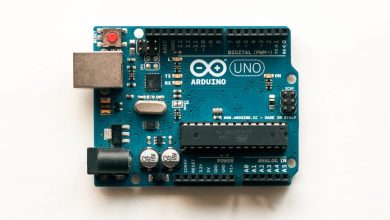What You Need to Know About NVMe SSD

An SSD is one of the biggest performance upgrades to your PC, radically boosting responsiveness and boot times. This storage revolution was first brought about by SATA SSDs, which were much faster than conventional hard drives. But today’s best NVMe SSDs can far exceed the capabilities of even SATA SSDs. Let’s take a deeper look into NVMe SSDs.
FYI: upgrading your SSD? Learn what to look for when buying an SSD.
What Is NVMe?
NVMEe stands for Non-Volatile Memory Express. It’s a storage connection standard that uses the blazing-fast PCI Express (PCIe) bus to communicate with your CPU, instead of the slower SATA bus used by standard hard drives and SATA SSDs. Alongside exponential jumps in maximum transfer speeds, NVMe offers transfer parallelization, deep queuing, and system interrupts.
For high-performance consumer and enterprise storage, NVMe is the current de facto standard. Scroll through PC listings, and you’ll see the option on higher-end laptops and PC workstations. It’s also baked into Apple’s mobile devices, and some Android smartphone manufacturers employ NVMe storage as well. Microsoft’s DirectStorage technology in Windows 11 makes use of the fastest SSDs to reduce loading times in games.
Like SATA, NVMe is a connection standard, not a form factor. It doesn’t describe the size or shape of the drive. M.2, on the other hand, is a form factor, but one so closely associated with NVMe that the two have become somewhat synonymous, despite the technical inaccuracy. In fact, an NVMe SSD can exist as a PCIe card, which is how some of the commercially available NVMe SSDs in the PCIe form factor are made. Even SATA SSDs exist in the M.2 form factor.
How Fast Are NVMe SSDs?
NVMe was created because newer solid-state drives saturated even the bandwidth of SATA III. At a theoretical maximum of 6Gb/s (that’s gigabits, eight times smaller than a gigabyte) and a maximum transfer speed of 600 MB/s, the SATA III connection is swiftly saturated by a high-performance SSD under optimal conditions. But flash storage can reach speeds far beyond what SATA III will allow. To free the silicon from its SATA shackles, NVMe was created.
Rather than doubling the bandwidth of SATA III by using two SATA interfaces for each drive – a cumbersome, expensive, and power-intensive idea — the industry began steering towards NVMe drives as the future of digital storage.
When sending data over the PCIe bus, NVMe can use up to four PCIe lanes on modern motherboards, sending data in parallel. Each PCIe lane can handle approximately 4 GB/s or 32Gb/s. That’s more than five times as fast as the theoretical maximum of SATA III. While no device ever reaches those speeds, the headroom available for SSDs to exploit is enormous. You’ll see PCIe 3.0 NVMe SSDs with read speeds of around 3,500 MB/s, with PCIe 4.0 and PCIe 5.0 taking that up to around 7,000 MB/s and 12,000 MB/s, respectively.
As a result, transfers happen as rapidly as the operating system and storage bus can handle them, exponentially increasing the speed of data transfer and increasing machine productivity.
FYI: need the fastest SSD for your gaming rig? Check out the best SSDs for gaming.
SATA vs. NVMe SSDs
While NVMe SSDs are drastically faster than SATA SSDs, that isn’t the only difference between them. The SATA vs. NVMe discussion revolves around other factors as well: form factor, price, capacity, and compatibility.
Choosing to upgrade to an NVMe SSD may seem the obvious choice, but you would need to consider your storage budget, as well as system compatibility. Now, compared to SATA SSDs, NVMe SSDs can cost from around 35% more (for a decent PCIe 4.0 NVMe SSD) to as much as 200% more (for a premium PCIe 5.0 SSD), for the same capacity. You can even opt for a cheap PCIe 3.0 NVMe SSD that might cost the same as an SATA SSD.
The advantages of NVMe SSDs over SATA SSDs are numerous:
- Incredibly high read/write speeds
- Compact form factor leading to a clean system
- Larger capacities (up to 61TB for commercial drives)
- Longer lasting
These benefits notwithstanding, SATA SSDs also have some advantages over NVMe SSDs:
- Better price per TB
- More likelihood of compatibility with older PCs
What Do I Need to Upgrade to an NVMe SSD?
Upgrading your hard drive to an NVMe SSD is one of the biggest upgrades you can make to your computer. Compared to a SATA SSD where the only requirement is a vacant SATA slot on your motherboard (and there are many, even on older boards), an NVMe SSD is slightly harder to upgrade to if you’re using a really old system.
You’ll need to ensure the following things if you want to upgrade to an NVMe SSD:
- Free M.2 slot on your motherboard for M.2 SSDs supporting NVMe
- BIOS supporting NVMe
- A free PCIe slot for PCIe card SSDs
- Appropriate PCIe support (e.g., PCIe 4.0 for a Gen4 SSD) for maximum performance
- M.2 heatsink for high-performance M.2 SSDs
- Some proficiency in installing an NVMe SSD
Today’s NVMe SSDs are much bigger upgrades over SATA SSDs than SATA SSDs were over conventional hard drives. While an NVMe SSD is the better choice, there are cases where you may have to choose a SATA SSD over its faster sibling. Whichever SSD you buy, there are things you must do when running an SSD in Windows to ensure maximum performance and extend its lifespan.
Image credit: Pexels
Subscribe to our newsletter!
Our latest tutorials delivered straight to your inbox




